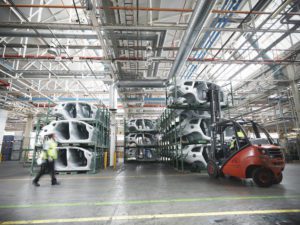I remember when I was an engineer fresh out of university and having a discussion with a co-worker who was in charge of the design of a new clean room for a factory. I naively expected him to focus on the performing components, maybe the air pump and blowers or the filter. He surprised me by explaining that the main criterion was the aesthetics of the control panel, this simple 2 button interface on the wall. “That’s the first thing our colleagues will see in the morning, and the last they will see from work before going home. Will it put them in a good or bad mood for the work day? Will it help them relax before going home each evening? ” Looking back, it completely makes sense but at the time, it kind of went against my technically focused mind.
Now a few years later, I regularly encounter machine manufacturers for whom aesthetics is a key criterion for competitive differentiation. In a world where technologies spread quickly and where novelty is copied in a matter of months, aesthetics is the best way to establish your brand image. As common wisdom goes, you can only make a good first impression once so better work hard on it. Your customers will always remember the first time they saw your machines, and consciously or not, it will influence their purchasing decision.
And as part of the aesthetics, the Control & Signaling interfaces are key components to consider. There are two reasons for this, the first one being that these interfaces are how your customers will regularly interact with your machines, so that’s the part that will impact them the most. The second reason is what I’d call the pragmatic aesthetics and is best explained with a personal anecdote that happened a couple of months ago. See, I recently purchased a new computer and being kind of a geek I focused on key electronic components: CPU, memory, graphic card… My wife on the other hand had only one request: an easy to read keyboard with big letters on it. Indeed being a foreigner in France, she still struggle with the strange accents and signs we put on all our letters… And there stands the pragmatic aesthetics, in this simple request to have the design of the interface bringing more meaning to her, and thus making her life easier and more efficient. And obviously it is the same for an industrial machine, if your control interface is easy to understand and use, surely the operators will become more efficient, more productive for your customers.
The Red Dot Design is an international product design award for its innovative design.So how can you make your machine even more performing in the domain of aesthetics? First of all by providing components that will inspire trust in their reliability at first look and be both innovative looking and easy to use. Look for component manufactures that have a dedicated team of designers working on these very topics and are regularly rewarded by external awards.
Secondly, choose accessories that will help the control components look more integrated with the complete design of your machine.
Flush mount kit accessories for push buttons can help eliminate them looking like a wart or last minute additions to your machines, and will offer a fully integrated look as part of its body.Finally if standard products are not enough to satisfy your hunger for aesthetics, many times you can customize your control interfaces, both by providing specific images for your touch screen software or by customizing the hardware of the products.
A typically green crane remote controller can be changed to wear a new red dress to fit with your brand image.What are your thoughts when it comes to focusing on aesthetics for a competitive differentiation?



